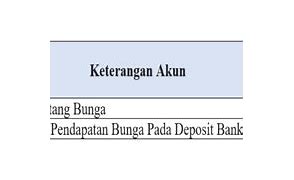
IDFC FIRST Bank Savings Account - a gamechanger
You must have understood by now that a higher rate of interest translates into a higher return on your account balance. Similarly, frequent interest credits lead to faster compounding, helping you achieve your financial goals sooner.
IDFC FIRST Bank Savings Account ticks the boxes on both these parameters. Its savings account bank interest rate is among the best in the industry and is comparable to even fixed deposit interest rates. But that’s not all! It also slashes down the costs that are typically involved in operating a savings account. IDFC FIRST Bank Savings Account offers zero-fee banking on all commonly used savings account services. This includes –
Also read - Build your emergency fund with some of the best savings accounts
Interest earned versus interest paid
Interest can be divided into two different types: interest earned and interest paid.
Interest that is gained over a period of time is known as interest earned. Usually earned on personal accounts, interest earned is an incentive for account owners to continue to place their money in a particular account. The amount of interest you earn depends on the type of account and interest rate.
Offering you the ability to achieve your savings goals faster, savings accounts can come with introductory interest rates for the first few months of the account being opened or bonus interest if you meet certain conditions. Interest is calculated based on the amount of funds in the account. The greater the sum of the funds in the account, the more interest you gain. Discover our savings account options to choose the right savings account for your lifestyle.
Term deposits are a more attractive option if you’re looking to maximise your funds and your savings. Offering fixed, but higher, interest rates, a term deposit offers larger gains from interest rates. The interest rate differs based on factors such as term length and the sum deposited into the account. Find out why NAB Term Deposits are a great option if you’re looking to increase your savings but don’t need immediate or daily access to your money.
Unlike interest earned on personal accounts, interest paid works the opposite way: with you paying interest that is accrued. Interest paid is generally associated with products such as loans and credit cards. In this case the interest rate to be paid is a charge associated with borrowing the funds for the loan or the credit card. The interest rate will also change based on the product itself and the terms of the product.
The interest rate that you have to pay on credit cards is a service fee for borrowing the funds on the card. The interest rate you pay depends on the type of card you choose. There is also a minimum monthly repayment and usually an annual card fee. With many types of credit cards available it can be difficult to find the right credit card for your needs. Our helpful credit card comparison tool can assist you in making an informed choice when looking for a credit card. Learn about how credit card interest is calculated and how to avoid it.
Not all credit cards charge their user interest. Our StraightUp credit card is interest free. This is done by limiting the amount you can borrow on the card, and having a fixed monthly fee for its use. This fee is also reversed if, during the statement period, you make no purchases and have no outstanding balance on the card.
A home loan interest rate is used to calculate the amount interest of that you’re charged for borrowing money from a lender. The lower the interest rate, the less interest you’re likely to pay over the life of your loan. Home loans offer both fixed and variable interest rate options for you to consider:
Find out more about the benefits of fixed and variable interest rates and how they can impact your home loan repayments.
Much like a home loan, personal loan interest rates are available in fixed and variable forms and are paid over the life of the personal loan. When making the choice to get a personal loan it’s important that you make an informed decision. To determine the right loan for your goals and lifestyle, read our guide on personal loan interest rates and terms explained.
Manajemen Aset-Liabilitas
Manajemen aset-liabilitas yang efektif sangat penting untuk memaksimalkan Pendapatan Bunga Bersih.
Lembaga keuangan perlu memastikan bahwa mereka memiliki keseimbangan antara risiko suku bunga pada aset dan liabilitas mereka untuk menghindari ketidaksesuaian suku bunga yang dapat berdampak negatif terhadap Pendapatan Bunga Bersih.
Persaingan dari lembaga keuangan lain juga dapat memengaruhi Pendapatan Bunga Bersih lembaga keuangan. Jika pesaing menawarkan suku bunga pinjaman atau simpanan yang lebih menarik, lembaga keuangan dapat kehilangan bisnis dan mengalami penurunan Pendapatan Bunga Bersih.
Perubahan regulasi, seperti perubahan persyaratan modal atau suku bunga, juga dapat memengaruhi Pendapatan Bunga Bersih lembaga keuangan. Perubahan peraturan dapat memengaruhi biaya dana dan tarif yang dikenakan pada pinjaman, yang dapat memengaruhi Pendapatan Bunga Bersih.
Secara keseluruhan, terdapat beberapa faktor internal dan eksternal yang dapat memengaruhi Pendapatan Bunga Bersih suatu lembaga keuangan. Penting bagi lembaga keuangan untuk mengelola faktor-faktor ini secara efektif untuk memaksimalkan Pendapatan Bunga Bersih dan mempertahankan profitabilitas jangka panjangnya.
Interest is a payment from a bank account, credit card or loan, that builds up over a set period of time. Interest can be accrued (earned) by an account like a term deposit, and paid to you in a sum at the end of a specific term. Interest is also added to loan repayments as a charge for using the funds of the lender. Find out more about our interest rates and how they can benefit you.
Rumus Menghitung Net Interest Income
Rumus untuk menghitung Net Interest Income adalah:
Pendapatan Bunga Bersih = Pendapatan Bunga Bruto - Beban Bunga Bruto
Di mana:Pendapatan Bunga Bruto = Total bunga yang diperoleh dari pinjaman dan aset penghasil bunga lainnya seperti sekuritas, obligasi, dan investasi.Beban Bunga Bruto = Total bunga yang dibayarkan pada deposito dan kewajiban berbunga lainnya seperti pinjaman, obligasi, dan sertifikat deposito.
Dengan mengurangkan total bunga yang dibayarkan dari total bunga yang diperoleh, rumus tersebut menentukan jumlah uang yang diperoleh lembaga keuangan dari aktivitas yang menghasilkan bunga, yang mewakili Net Interest Income-nya.
What is the bank rate?
The bank rate is the rate at which the central bank lends money to commercial banks. But, as customers, you would be more interested in bank interest rate on your savings account. Assuming that your bank offers 4% interest on your savings account, you will receive ₹100 at the end of the quarter on an average balance of ₹10,000.
The higher the interest rate, the higher your income from your savings account balance. Besides, the frequency also matters. If the compounding occurs half-yearly, your interest income would be less. Most banks calculate the interest quarterly, as shown in the above example. IDFC FIRST Bank Savings Account interest is credited monthly, leading to even faster compounding.
Pengertian Net Interest Income
Pendapatan Bunga Bersih atau Net Interest Income adalah perbedaan antara jumlah total bunga yang diterima dari pinjaman dan aset lain yang menghasilkan bunga dengan jumlah total bunga yang dibayarkan atas deposito dan kewajiban berbunga oleh lembaga keuangan.
Ini merupakan ukuran utama kinerja yang sering dipergunakan oleh bank, koperasi kredit, serta institusi keuangan lainnya untuk menilai profitabilitas dan efisiensi mereka dalam menghasilkan pendapatan bunga dari aktivitas peminjaman dan investasi. Dalam kata lain, ini mencerminkan jumlah uang yang diperoleh oleh lembaga keuangan dari pinjaman inti dan operasi investasinya.
Alat Manajemen Risiko
Net Interest Income juga berfungsi sebagai alat manajemen risiko untuk lembaga keuangan. Net Interest Income yang lebih rendah dapat mengindikasikan potensi risiko gagal bayar, dan sebaliknya.
Dengan demikian, ini membantu lembaga keuangan untuk mengidentifikasi potensi risiko kredit dan mengelola portofolio pinjaman mereka.
Regulator seringkali mewajibkan lembaga keuangan untuk mempertahankan tingkat Net Interest Income minimum untuk memastikan stabilitas keuangan mereka.
Hal ini terutama berlaku untuk bank dan lembaga penyimpanan lainnya, yang diharuskan mempertahankan tingkat Net Interest Income tertentu untuk memenuhi persyaratan likuiditas dan kecukupan modalnya.
Faktor-faktor yang Memengaruhi Pendapatan Bunga Bersih
Ada beberapa faktor yang dapat memengaruhi Pendapatan Bunga Bersih suatu lembaga keuangan, antara lain:
Tingkat suku bunga dalam perekonomian dapat berdampak signifikan terhadap Pendapatan Bunga Bersih lembaga keuangan.
Suku bunga yang lebih tinggi biasanya menghasilkan pendapatan bunga yang lebih tinggi yang diperoleh dari pinjaman dan aset penghasil bunga lainnya, tetapi juga biaya bunga yang lebih tinggi untuk deposito dan kewajiban berbunga lainnya.
Komposisi dan kualitas portofolio pinjaman lembaga keuangan juga dapat memengaruhi Pendapatan Bunga Bersihnya.
Pinjaman dengan kualitas lebih tinggi biasanya menghasilkan pendapatan bunga yang lebih tinggi dan kerugian kredit yang lebih rendah, yang dapat meningkatkan Pendapatan Bunga Bersih.
Sebaliknya, portofolio pinjaman berkualitas buruk dengan tunggakan dan gagal bayar yang tinggi dapat secara signifikan mengurangi Pendapatan Bunga Bersih.
The right savings account maximises your finances
If you are looking for a new savings account, here are a few factors to consider –
Go for a bank that offers a high-interest rate. It will directly result in higher income.
Ensure that the banking services that you regularly use attract minimal charges or none.
Choose an account whose minimum balance requirement is as per your convenience.
The savings account and its features must match your financial goals and expectations from the account.
Digital banking, an all-in-one mobile banking app and customer support are facets that make a savings account user-friendly.
Simple interest versus compound interest
When it comes to interest on your accounts, there are two main types to consider: simple interest and compound interest.
Simple interest is calculated from your initial deposit amount. For example, you made a $10,000 deposit with a 5% p.a. interest rate. At the end of five years, you’ll earn $2,500 in interest, regardless of any additional deposits made.
Compound interest calculates interest on your initial deposit as well as interest earned in previous terms. For example, if you invest $10,000 at 5% p.a., you’ll earn $2,833.59 in interest, even if you don’t make any additional deposits. It’s a good idea to learn about compound interest and understand the factors that impact the amount you’ll earn.
Penerbitan Jurnal-Jurnal pada Institut Agama Islam Negeri Lhokseumawe di koordinir oleh Lembaga Penelitian dan Pengabdian Masyarakat (LPPM).



